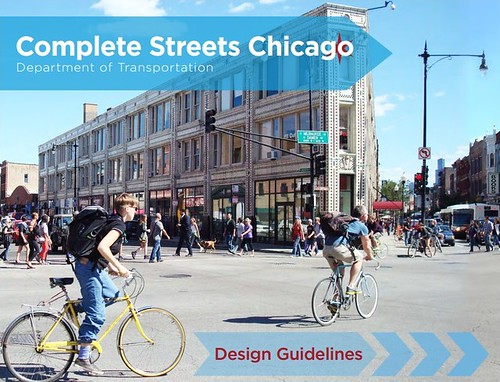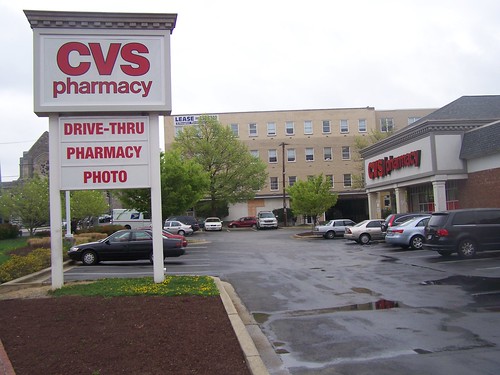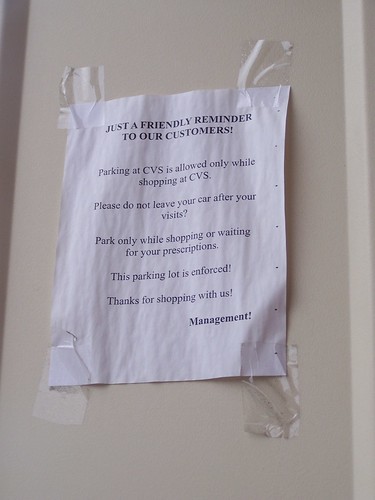Sustainable transportation consultant Jeff Tumlin presented in Richmond and DC
I missed both presentations earlier this week by Jeff Tumlin, one of the nation's leading sustainable transportation planners as a consultant at Nelson-Nygaard, and author of Sustainable Transportation Planning: Tools for Creating Vibrant, Healthy, and Resilient Communities.
-- (Review of the book from UCB.)
On Monday, he presented to the Partnership for Smart Growth in Richmond, to about 80 attendees, including a couple of City Council members and the city's bike and pedestrian planner. The Richmond.com website, affiliated with the Richmond Times-Dispatch, published a thorough summary of the talk, "10 Things Every City Can Do for Sustainable Transportation."
From the article:
During his presentation, Tumlin stated and elaborated on 10 Things Every City Can Do for Sustainable Transportation:
1. Measure what matters: "[Transportation planners] make projections but never go back and see if it was the right plan."
2. Make walking a pleasure: Successful planning design in all cities are measured by this. "Walking is engineered out of daily life...my industry has made walking effectively illegal...Don't ever sacrifice walking for any other mode of transportation, even biking."
3. Put the needs of daily life within walking distance: With poorly planned neighborhoods and no walking and higher traffic volumes, less people know their neighbors and have less connection to their surroundings.
4. Make biking safe and easy for everyone: There is no better way to attract people to cycling than to build bike lanes and provide facilities and access. Improves safety, health, retail sales, etc.
5. Make transit Fast, Frequent, Reliable and Dignified: Mass transit is driven by labor costs, not cost of vehicles -- demand nice, dependable, efficient buses. Give mass transit priority -- make everyone feel welcome and valued.

6. Adopt good street design manuals: Good design starts with place. The best transportation plan is a good land use plan.
Right: The new Chicago Complete Streets Manual looks to be very interesting and a leap forward in practice.
7. Make traffic analysis work: The transportation death spiral = Congestion -> Fix by widening roadway -> Brings faster driving -> Leads to more people driving, more congestion. Slower traffic is safer.
8. Price is Right: Control supply and demand for roadways by choosing between spending more money to fix roads, or spending more time to wait through congestion.
9. Manage and price parking: "Every city is stupid about parking." The average cost is $25,000 per parking space and most cities will come to find that they could have better spent that money on something else. Better manage the spaces you already have to fill the empty ones before building new ones. Cities should invest in technology to direct people to open parking and use current inventory of spaces. Vary the prices for parking based on location, time of day, day of the week. Allow the money collected at meters to benefit the street or neighborhood where the money was collected.
10. Create a better vision: The auto industry "used the belief that the automobile will change our lives" by making us more sexy, successful and powerful.
And somehow I missed that he spoke last night here, at a forum sponsored by the Coalition for Smarter Growth. Fortunately, Aaron Weiner of the Washington City Paper was there, and he summarized the talk in a blog entry, "How to Help People Park (by Charging Them More)."
The DC talk was about parking specifically. From the article (mostly edited down to the points, with some extended discussion remaining because it reiterates points I've made myself):
So how do you reform parking to make cities as functional as possible for drivers? Here—and I warn you, this is about to get wonky—are Tumlin's 15 steps:
1. Beware residential parking permits. Considered the holy grail among some D.C. residents, RPPs were designed to keep commuters from taking over the parking lanes of residential streets. But when demand exceeds supply—in other words, when there are many more RPPs issued than there are parking spaces—the hunt for parking continues. It's sometimes better to charge for residential parking like you do for commercial parking; after all, who's to say that a resident's parking should be subsidized and protected by the city while a visiting contractor's or a nearby customer's should be banned? "Government," Tumlin says, "doesn't have much business deciding who has the right to park and who doesn't."
2. Meters must take credit cards.
3. Use smart technology like phone apps that help people find spaces.
4. Find the right price.
5. Find the right time. It makes no sense to charge for parking from 9 to 5 on a street full of restaurants where parking is tightest from 7 to 10. Charge until midnight if needed. Likewise, don't limit people to two hours of parking. Let them have dinner and a movie, and pay extra (provided they can do it conveniently with their cards or phones, not by running back to feed the meter or digging through mounds of quarters). That's better for businesses and for drivers.
Left: coordinated valet parking services in the North Park commercial district (it has a business improvement district but they use Main Street principles to organize how it provides services and marketing) in San Diego.
6. Invest your revenue. In Pasadena, 100 percent of meter revenue goes to the neighborhood business improvement districts to provide for cleaner streets, safety, and marketing. That's better than putting the revenue into the city's general fund and prompting residents to accuse the city of extortion. At the very least, a city should be clear about how the money's being invested.
7. Be flexible. Allow restaurants and cafes to set up outdoor tables in the parking lane if they so desire. Remember, parking on retail corridors is there to serve the retail establishments. If they find that they get more business by increasing their street presence, let them do it. Outdoor tables in a parking lane at a restaurant not only give a boost to that restaurant, Tumlin says, they also help neighboring businesses by attracting people to the street.
8. Eliminate minimum requirements for off-street parking in new buildings.
9. Replace minimums with maximums.
10. Design parking well. Don't degrade the pedestrian experience for cars' sake.

Right: a parking fronted CVS store in Takoma DC.
11. Locate driveways well. Again, they shouldn't turn a sidewalk into a minefield for pedestrians.
12. Unbundle parking from leases.
13. Encourage tandem/stack/valet parking, to save space.
14. Share. Each car-share vehicle, Tumlin says, eliminates seven to 25 vehicles from the roads. Hoboken, N.J., bribed residents with a two-year car-sharing membership and $100 to give up their RPPs, and Tumlin says it was a big success.
15. Park once.
-----------------
Note with regard to parking policy for DC I recommend:
 Left: notice posted at the CVS store in Takoma DC that parking is only for customers while they are shopping at the store.
Left: notice posted at the CVS store in Takoma DC that parking is only for customers while they are shopping at the store. 1. Charging more for residential parking permits.
2. Reducing zoning mandated parking requirements in multiunit residential buildings in transit priority zones.
3. Charging an annual fee for residential curb cuts in most neighborhoods.
4. Charging less to carsharing firms for carsharing parking privileges in public spaces.
5. Extending the period of time people can park at meters and in residential districts--2 hours is not long enough for trip chaining.
6. Creating transportation management districts to manage mobility -- all modes -- in particular districts. Parking revenues would support streetscape and transportation improvements in those districts.
7. and moving to shared parking systems in those districts
8. with coordinated valet services, especially in places like U Street, Adams-Morgan, Georgetown, H Street NE, 8th Street SE, etc.
9. Getting rid of the free visitor parking permits given to households participating in the so-called "Performance Parking Pilot Zones"
10. Considering the addition of some municipal parking options.
11. Creating a system of intra-neighborhood transit to move people from home to shopping and restaurants and transit stations without having to drive their own cars.
12. Charging for disabled parking spaces in commercial districts.
13. Creating coordinated parking wayfinding systems.
Labels: bicycling, car culture and automobility, parking and curbside management, sustainable transportation, transportation planning, walking





7 Comments:
A good list, but unhelpful framing.
Really, we need to be looking at parking at how to improve the experience -- and if there are other benefits that is bonus.
to add to your list:
1. Getting valet parking to stop using stret parking and use garages.
2. Likewise, in commerical areas to get garges on better hours. Good luck finding one at 5PM or later.
3, Car2Go has been a phenemol use of street parking. Zipcar, not so much.
4. Bikeshare station taking parking spots has not been a great idea.
5. Finding incentives to get delivery vehicles outside high density areas in certain hours.
Part of it is walk/gum problem, and part of it is framing.
your point about framing is a very good one.
But wrt bike share, we disagree and this illustrates the issue to a t.
The issue is what is the best use of curbside space. A bike sharing station, which supports many many people, is likely a better use than for a couple parking places.
Relatedly, the issue becomes do you impinge on the pedestrian--by putting a bike share station on the sidewalk--or the car.
The reason I am more willing to support parking structures, and municipal ones, is because of the desire to use limited street space for things other than car storage--like for bike lanes, bike sharing stations, dedicated transitways, etc.
wrt for profit parking structures, your point about timing is a good one. It's semi-related to the point I made in response to a WCP article opining that performance parking didn't matter because of the for profit parking inventory. I countered that building parking is mostly managed as a tenant amenity, not as an asset whose profit making potential is supposed to be maximized.
One of my points in the "Parking Summit" process is that they ignored the for profit parking sector. Then how can you deal with the issue completely? And it's why I keep promoting integrated parking wayfinding and info systems.
In terms of bikeshare, I'm looking at it from the experience of a user.
You've got 35 seconds or so while you get the bike, adjust, move it form the dock, load up.
And I find that far more stressful when being exposed on the street. You're distracted and not watching traffic.
I agree it is also difficult for pedestrians around bikeshare stations. I find the one at 15th and P very bad for this, hard NOT to run into someone.
http://www.smclc.net/
Tumlin loves to tell gullible government planners that they are being "stupid" about giving away parking. He tells them that they can be "smart" by writing him and his company a check and then convincing them to spend millions of dollars on his untested theories that only benefit developers.
Nothing that this guy says can be taken seriously or be backed up with any empirical evidence. Tumlins arrogant and condescending attitude towards San Francisco and Santa Monica residents speaks volumes about his incompetence. He was fired for calling San Monica residents NIMBYS and residents in San Francisco have demanded a hearing with the Board of Supervisors.
"Jeff Tumlin was the City’s principal traffic consultant for seven years, during which he made over $1 million for his firm, though traffic, congestion and gridlock got measurably worse. "
"Tumlin’s most recent planning surprise surfaced a couple of weeks ago when he claimed, after years of fiddling with parking plans, that the best way to reduce traffic was to provide fewer parking spaces. The rationale: if people know they can’t park, they won’t drive. Developers were crazy about the idea, as it would dramatically reduce their costs. Residents weren’t, as it would radically increase congestion."
The Santa Monica Dispatch
"Residents have had enough. The City has paid Mr. Tumlin and his firm over $1.6 million to devise circulation and parking policies. Virtually nothing concrete has come out of this lengthy,expensive process."
- The Santa Monica Coalition for a Livable City
Hello, I've been looking through the weblog a pair of times and basically needed to say that the way with phrases is best notch. All the best.
airport taxi edina
I am very astonished by the data of this blog and i am happy i had a look in excess of
the blog. thank you so much for sharing such great data.
driving
schools in silver spring
This is a great post.
Thank you for providing such valuable information.
Visit here -"Medicine Warehouse".
Post a Comment
<< Home